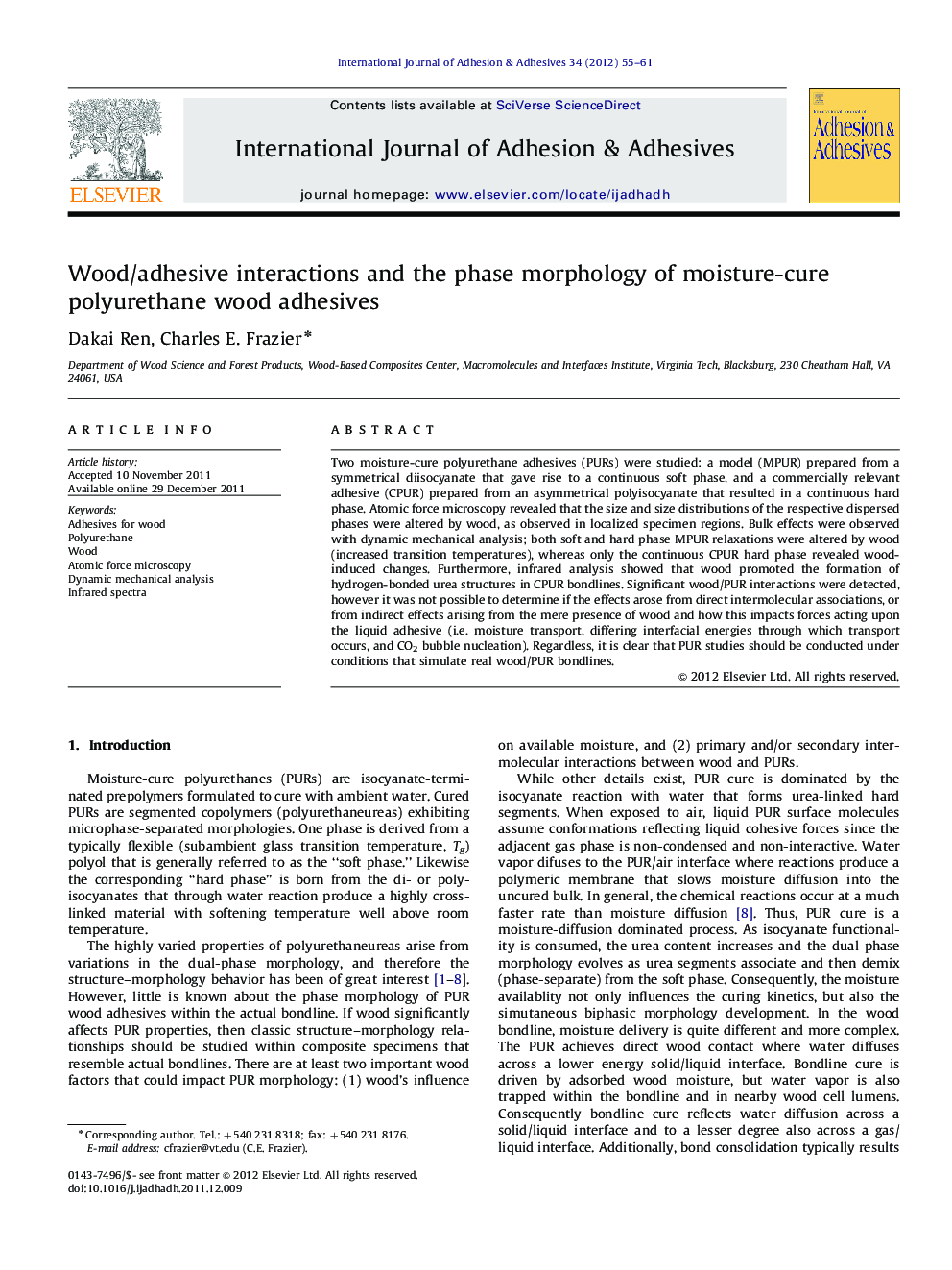| Article ID | Journal | Published Year | Pages | File Type |
|---|---|---|---|---|
| 777016 | International Journal of Adhesion and Adhesives | 2012 | 7 Pages |
Two moisture-cure polyurethane adhesives (PURs) were studied: a model (MPUR) prepared from a symmetrical diisocyanate that gave rise to a continuous soft phase, and a commercially relevant adhesive (CPUR) prepared from an asymmetrical polyisocyanate that resulted in a continuous hard phase. Atomic force microscopy revealed that the size and size distributions of the respective dispersed phases were altered by wood, as observed in localized specimen regions. Bulk effects were observed with dynamic mechanical analysis; both soft and hard phase MPUR relaxations were altered by wood (increased transition temperatures), whereas only the continuous CPUR hard phase revealed wood-induced changes. Furthermore, infrared analysis showed that wood promoted the formation of hydrogen-bonded urea structures in CPUR bondlines. Significant wood/PUR interactions were detected, however it was not possible to determine if the effects arose from direct intermolecular associations, or from indirect effects arising from the mere presence of wood and how this impacts forces acting upon the liquid adhesive (i.e. moisture transport, differing interfacial energies through which transport occurs, and CO2 bubble nucleation). Regardless, it is clear that PUR studies should be conducted under conditions that simulate real wood/PUR bondlines.
